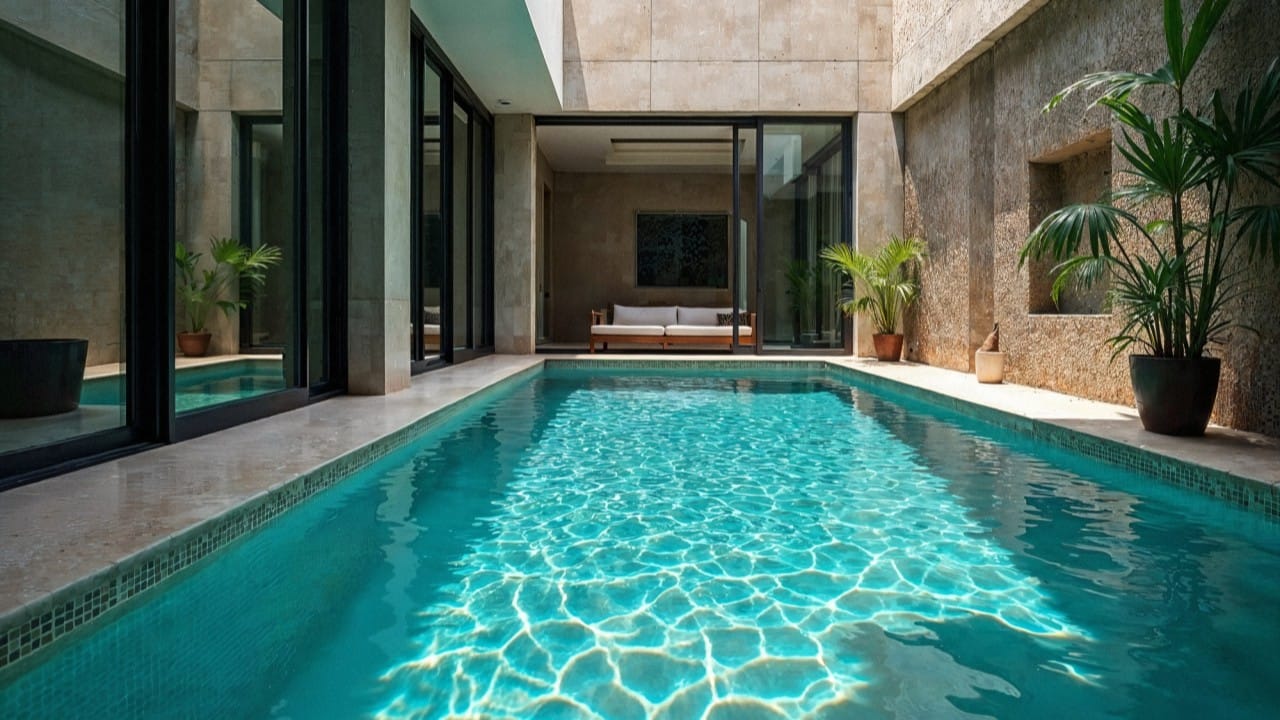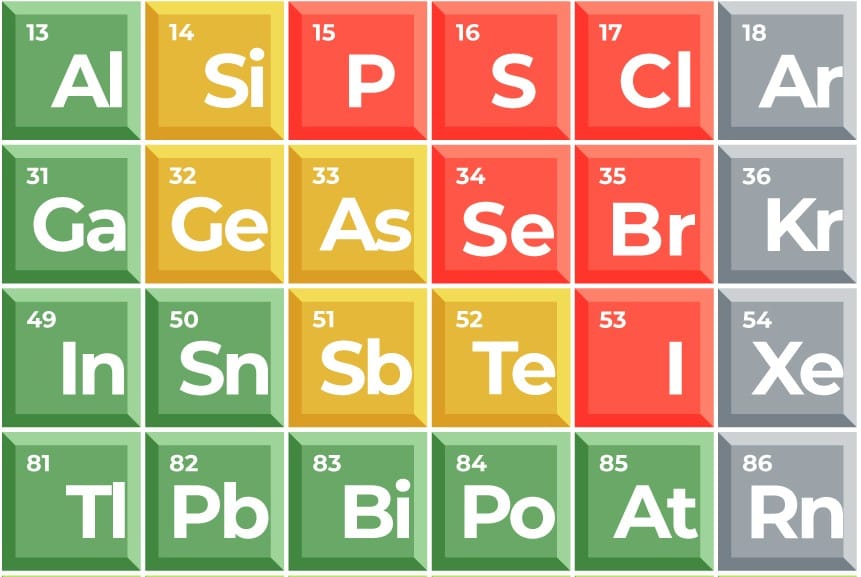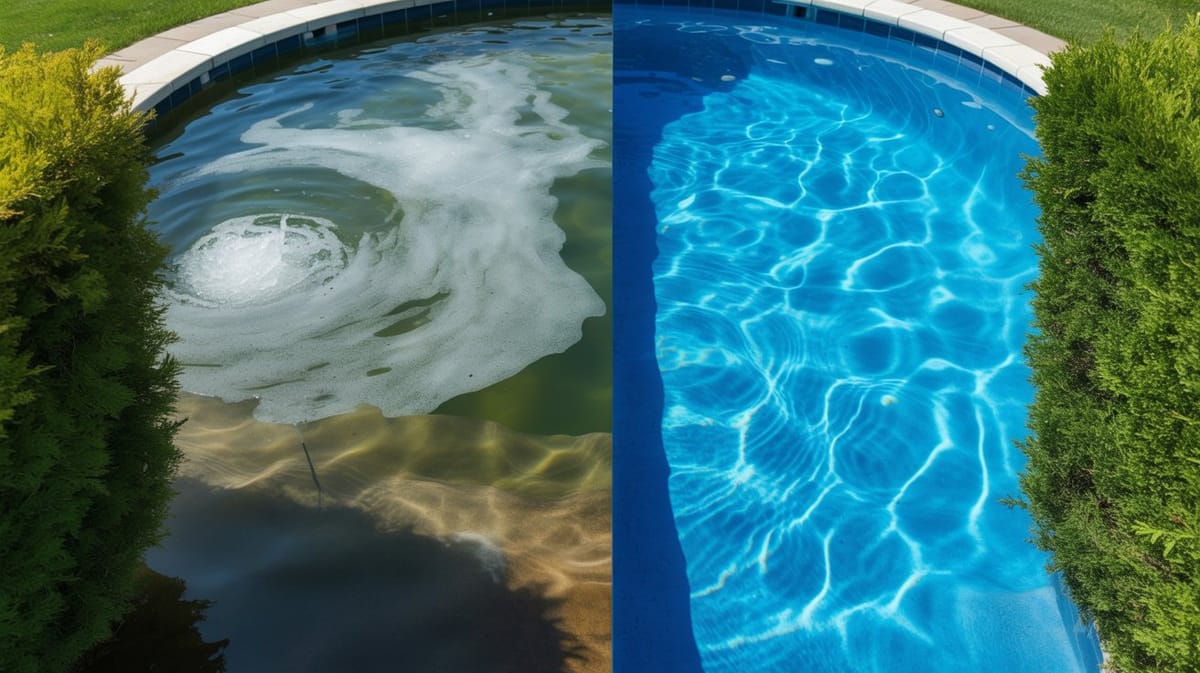Bromine Pool Chemistry: Expert Guide to Better Water Sanitisation

Maintaining a clean and safe pool is essential for Australian pool owners, especially with our warm climate and love for outdoor living.
A bromine pool sanitising system costs almost twice as much as chlorine. A 50-pound bucket of chlorine tablets costs around $150, while bromine tablets' cost can reach $300. Bromine remains the most popular chlorine alternative for pool sanitisation, despite this price difference.
This piece explores bromine and chlorine pool chemistry differences, bromine pool maintenance techniques, and helps you decide if this sanitisation method matches your needs.
What Is Bromine in a Pool?
Bromine, a member of the halogen family, sits right below chlorine on the periodic table. This position makes it less reactive but still works effectively as a sanitiser. A look at what bromine is in a pool reveals a chemical sanitiser that breaks apart contaminants through ionisation. This process destroys harmful substances at the molecular level.
Hypobromous acid (HOBr) serves as bromine's active killing form in water and functions as both a sanitiser and oxidiser. HOBr transforms into bromide ions (Br-) after sanitising instead of completely disappearing. These bromide ions create an ongoing sanitisation cycle because oxidisers can reactivate them to produce new HOBr molecules. Bromine creates bromamine molecules that keep their sanitising properties, unlike chlorine's chloramines. This feature allows continuous disinfection.

Types of bromine: BCDMH, DBDMH, and sodium bromide
Pool and spa owners can choose from three main bromine products:
- BCDMH (bromochlorodimethylhydantoin) stands as the most common option. It comes in tablets or sticks with a moderately acidic pH of 4.5-4.8. This compound contains some chlorine and produces both HOBr and HOCl.
- DBDMH (dibromo-5,5-dimethylhydantoin) offers a chlorine-free solution with a relatively neutral pH of about 6.6.
- Sodium bromide creates a "bromide bank" in the water but isn't a sanitiser by itself. It produces active HOBr after combining with oxidisers like chlorine or potassium monopersulfate.
Bromine Pool Levels: Ideal PPM for Pools and Spas
Proper bromine levels are vital for effective sanitisation. Pool water needs bromine concentrations between 3 and 5 parts per million (ppm). Hot tubs and spas need higher levels—4 to 6 ppm—because of increased temperatures and more bathers.
Water's pH affects the required bromine level. Water with a pH above 7.5 needs bromine levels between 1.2 and 3 mg/liter. The requirement increases to 3 to 5 mg/liter for water with a pH above 8.2. Pool owners should test regularly with a colorimetric test or an electronic pH meter.
Bromine offers a key advantage over chlorine because it remains stable across a wider pH range. This stability means it keeps working even during small pH changes.
Bromine vs Chlorine: Chemical and Practical Differences
Pool owners need to understand the key chemical differences and practical uses when choosing between bromine and chlorine. These sanitisers work best in different settings because they have unique properties.
Oxidation Strength and Disinfection Cycle
Chlorine works as a stronger oxidiser than bromine and packs about 20% more power to break down contaminants. This means chlorine cleans water faster through direct oxidation by penetrating contaminants and stripping away electron particles. Bromine takes a different approach and works through ionisation to break apart pollutant molecules at a slower pace. Chlorine needs a specific pH range (7.2-7.4) to work well, but bromine stays effective across a wider pH range (6.5-8.0).
Bromamines vs Chloramines: Byproduct Behavior
The byproducts create the most important difference between these sanitisers. Chlorine creates chloramines after sanitising that:
- Lower disinfection power quickly
- Create that typical "pool smell" people often mistake for too much chlorine
- Make eyes sting and cause breathing problems and skin irritation
Bromamines, which are bromine's byproducts, keep almost the same cleaning power as free bromine. These byproducts don't smell as bad and stay in the water instead of evaporating like chloramines. This explains why people who use bromine have fewer problems with irritation.

Effectiveness in High-Temperature Water
Bromine keeps working well at temperatures up to 40°C, while chlorine starts losing strength above 28°C. This makes bromine a better choice for hot tubs and spas. Hot water causes quick pH changes naturally, so bromine's ability to handle different pH levels becomes even more valuable.
UV Sensitivity and Outdoor Pool Limitations
Bromine has one big weakness—it doesn't handle sunlight well. UV radiation creates a huge problem for outdoor bromine pools because it can destroy up to 80% of bromine in just 15 minutes. Unlike chlorine, which can be protected with cyanuric acid (stabiliser), there's no way to shield bromine from UV damage. This makes bromine a poor choice for outdoor pools, both in terms of how well it works and cost.
Maintaining a Bromine Pool: Best Practices
Bromine pools need different maintenance procedures than chlorine systems. Let me walk you through everything you need to know about keeping your bromine-sanitised water safe and crystal clear.
How to Maintain a Bromine Pool With a Brominator
Your brominator plays a vital role in bromine pool maintenance. These automatic dispensers release sanitiser into your water at a steady rate. You should place BCDMH or DBDMH tablets directly in the brominator—never add them straight to the pool or through skimmers. The brominator needs to be filled according to the manufacturer's instructions. You can then adjust the flow rate to keep proper sanitisation levels. You'll need frequent testing at the start until you find the sweet spot that keeps bromine levels stable.
pH Affect on Bromine Efficacy
Bromine handles pH changes better than chlorine, but maintaining the right pH level is still crucial. Your bromine works best when the pH stays between 7.0 and 7.6. The sanitising power drops gradually once the pH level exceeds 7.8, and it stops working completely above 8.0. Water temperature changes how pH behaves, too. You'll need to watch pH levels more carefully when temperatures rise.
Using Bromine Regenerators and Non-Chlorine Shocks
Your "bromide bank" needs reactivation from time to time with oxygen-based shock treatments. These non-chlorine shocks contain monopersulphate compounds that turn inactive bromide ions back into their active hypobromous acid form. The shock treatment should happen after each spa use or weekly if your pool sees less action. These treatments break down oils, sunscreens, and other organic contaminants without adding chlorine to the mix.
Testing and Adjusting Bromine Levels Weekly
Regular testing is the key to proper bromine maintenance. Check those bromine levels at least once every week. Pools need 3-5 ppm, while spas work best at 4-6 ppm. You can get accurate readings using colorimetric test strips or digital testers. Low levels mean it's time to add bromine tablets to your brominator or use a regenerator. The water might get cloudy, and bacteria could grow if levels drop below 3 ppm, so you'll need a shock treatment right away.

Challenges and Considerations with Bromine
While bromine is an effective sanitiser for pools, it comes with some challenges that Australian pool owners should consider to ensure optimal performance:
- Higher Cost: Bromine is generally more expensive than chlorine, which can increase the overall cost of pool maintenance. This may be a factor for budget-conscious pool owners, particularly for larger pools requiring more sanitiser.
- Slower Action: Compared to chlorine, bromine works more slowly to eliminate bacteria and contaminants. In heavily used pools or those exposed to frequent debris, this slower action may require more frequent monitoring to maintain water clarity.
- Regular Testing Required: To keep bromine levels within the ideal range of 3–5 ppm, regular testing with a reliable pool test kit is essential. Without consistent checks, bromine levels can drop, compromising water safety.
- Impact of Organic Debris: Leaves, dirt, and algae can deplete bromine levels, reducing its effectiveness. Regular pool cleaning is crucial to minimise this issue. Tools like the Aiper Scuba X1 Pro Max, which cleans pool floors, walls, and waterlines, can help remove debris and support stable bromine levels.
- pH Sensitivity: Bromine works best when the pool’s pH is between 7.2 and 7.8. If pH levels are too high or low, bromine’s sanitising power diminishes, requiring additional adjustments to water chemistry.
By understanding these challenges and maintaining a consistent cleaning and testing routine, pool owners can maximise bromine’s benefits while keeping their pool safe and inviting.
Conclusion
Bromine offers a reliable and effective solution for pool sanitisation, particularly for Australian pool owners seeking a gentler, heat-stable alternative to chlorine. Its ability to maintain sanitising power through bromamines, stability across a wide pH range, and reduced irritation make it an excellent choice for spas, hot tubs, and indoor pools. However, its higher cost, slower action, and vulnerability to UV degradation in outdoor settings require careful consideration and diligent maintenance.
By regularly testing bromine levels, maintaining proper pH, and keeping the pool free of debris with tools like the pool cleaners, you can ensure a clean, safe, and enjoyable swimming environment.
Want to enhance your pool maintenance routine? Explore our resources to support a clean and balanced pool.



